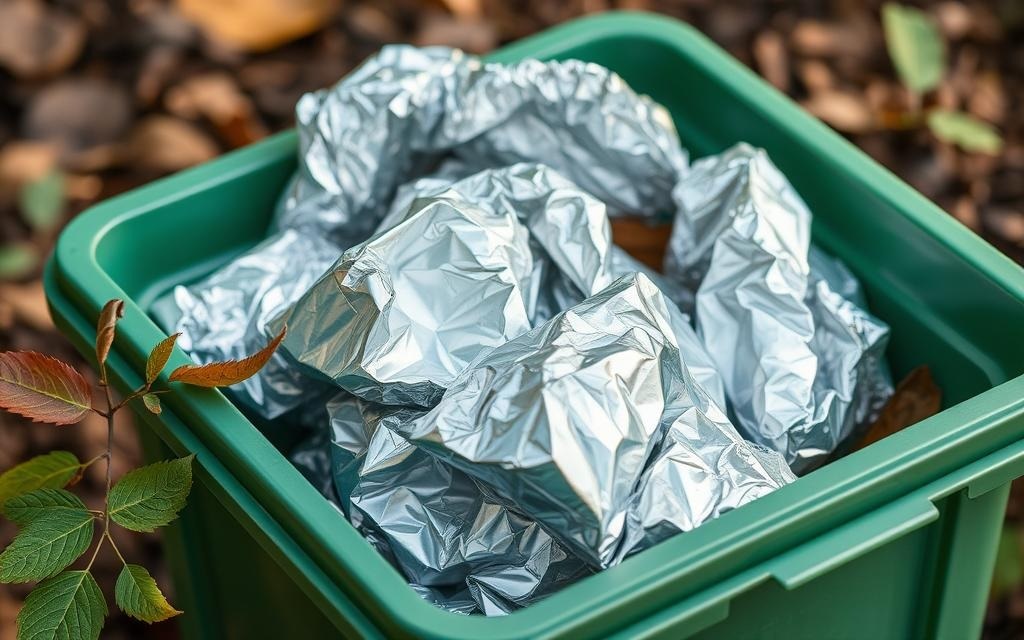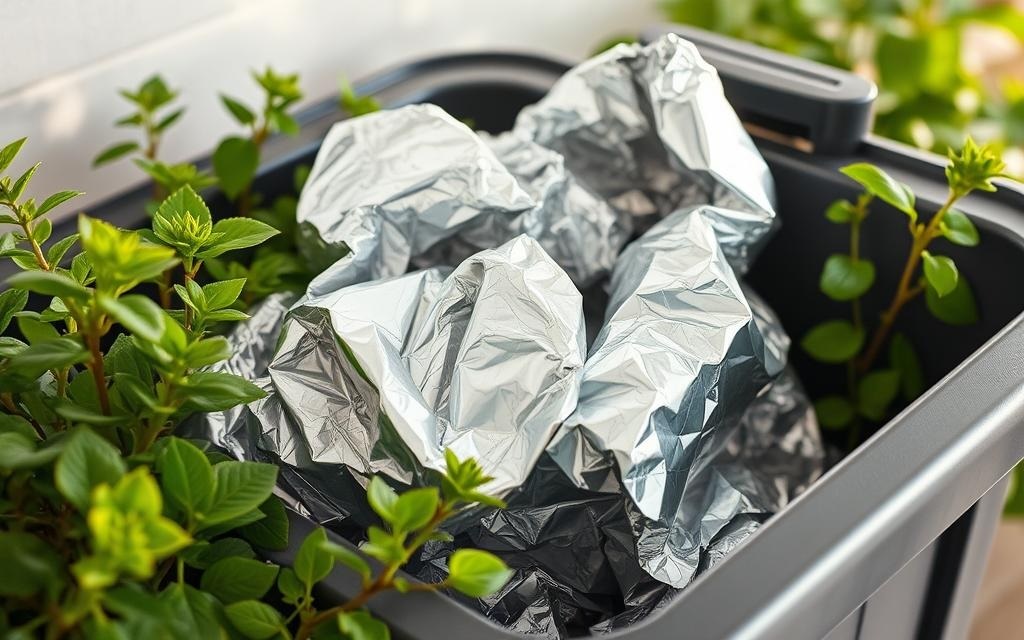Aluminum foil has become a kitchen staple worldwide. From wrapping leftovers to creating a shield against heat, it’s hard to imagine life without it. But as concerns over waste management and environmental health grow, one important question arises—is aluminum foil recyclable? This inquiry not only affects how we dispose of everyday items but also shapes our responsibility toward the planet. In this comprehensive guide, we’ll uncover everything about aluminum foil’s recyclability, offer practical insights, and explore sustainable alternatives to improve our ecological footprint.
Before diving into details, explore Green Ideas Products to discover innovative, eco-friendly solutions that align with sustainable living goals.
What Makes Aluminum Foil Special?

Aluminum foil stands out for its versatility, durability, and lightweight properties. Made primarily from aluminum, a highly abundant natural element, it boasts unique features like heat conductivity, malleability, and resistance to moisture and light. But, despite its benefits, aluminum foil’s production involves energy-intensive processes.
According to a study by the Aluminum Association, producing one ton of aluminum requires about 14,000 kWh of electricity, emitting significant amounts of carbon dioxide. This makes its recyclability crucial for reducing its environmental impact.
Is Aluminum Foil Recyclable? The Straight Answer
Yes, aluminum foil can be recycled, but it’s not as simple as tossing it into the recycling bin. The condition of the foil plays a critical role. Clean aluminum foil is recyclable because it retains the properties of aluminum, making it a valuable material for reprocessing. However, dirty or food-contaminated foil is often rejected because recycling facilities cannot process materials with organic residue effectively.
Aluminum Foil vs Plastic Wrap: Which is More Eco-Friendly?
When comparing aluminum foil vs plastic wrap, the debate isn’t one-size-fits-all. Aluminum foil, while recyclable, has a higher carbon footprint during production. Plastic wrap, on the other hand, is lighter and less energy-intensive to manufacture but harder to recycle due to its composition.
In terms of durability and reusability, aluminum foil can be cleaned and reused multiple times, unlike plastic wrap, which is often a single-use item. This reusability gives aluminum foil an edge in sustainability when managed properly.
The Challenges of Recycling Aluminum Foil
Although aluminum foil is recyclable, various barriers hinder its effective recycling. Some of the challenges include:
- Food Contamination
Most recycling centers reject aluminum foil with grease or food residue. These contaminants interfere with the recycling process by releasing harmful emissions or clogging machinery. - Small and Lightweight Nature
Thin and lightweight foil pieces are often mistaken for waste during sorting at recycling facilities. This makes them more likely to end up in landfills. - Lack of Awareness
Many people simply don’t know aluminum foil is recyclable, leading to improper disposal.
How to Recycle Aluminum Foil Properly
To ensure aluminum foil gets a second life, follow these recycling tips:
- Clean Before Recycling
Wash off food particles and grease with soap and water. For heavily soiled foil, consider repurposing it instead. - Compress for Efficiency
Crush aluminum foil into a ball. Larger, compact pieces are easier for recycling facilities to process. - Verify Local Guidelines
Check with your local recycling program to confirm whether aluminum foil is accepted. Policies may vary by region.
Creative Ways to Reuse Aluminum Foil
Before recycling, consider reusing aluminum foil in inventive ways:
- Sharpen Scissors: Fold foil into layers and cut through it multiple times to sharpen dull blades.
- DIY Scrubber: Roll foil into a ball to scrub stubborn stains off pots and pans.
- Seed Starters: Use foil to create makeshift containers for planting seeds.
- Heat Insulation: Wrap pipes or windows to retain warmth during colder months.
These practices extend the life of aluminum foil while minimizing waste.
Read More Also: Diagnosing Creaking Sounds in Carbon Fiber Bike Frames: A Comprehensive Guide
Environmental Impact of Aluminum Foil Production
The production of aluminum foil is resource-intensive. According to the International Aluminium Institute, manufacturing aluminum emits approximately 12 metric tons of CO₂ per ton of material produced. However, recycling aluminum uses only 5% of the energy required for primary production, significantly reducing emissions.
Recycling just one ton of aluminum saves over 14,000 kWh of energy—enough to power a home for months. This highlights why recycling is vital in mitigating aluminum foil’s environmental impact.
Sustainable Alternatives to Aluminum Foil
For those seeking to minimize waste entirely, eco-friendly alternatives to aluminum foil include:
- Beeswax Wraps: Reusable and compostable wraps made from cotton, beeswax, and tree resin.
- Silicone Baking Mats: Durable, heat-resistant mats that replace foil for baking.
- Glass Containers: Airtight glass containers are perfect for food storage and reheating.
These alternatives offer practical, long-term solutions to reduce dependency on single-use materials.
Read More Also: Subtle Weight Distribution Errors on a Skateboard Beginners Must Avoid
FAQs
Is aluminum foil biodegradable?
No, aluminum foil is not biodegradable. It can take hundreds of years to break down in landfills.
Can aluminum foil be reused?
Yes, aluminum foil can be cleaned and reused multiple times, making it a sustainable option when handled properly.
What happens if aluminum foil is not recycled?
When not recycled, aluminum foil typically ends up in landfills, contributing to waste and environmental pollution.
Are all types of aluminum foil recyclable?
Not all aluminum foil is recyclable. Foil that is laminated or contains non-recyclable coatings cannot be processed.
How can I tell if my aluminum foil is recyclable?
Clean, plain aluminum foil without any food residue is generally recyclable. Always check your local recycling guidelines for confirmation.
Why don’t more people recycle aluminum foil?
Lack of awareness and food contamination are the primary reasons aluminum foil isn’t recycled more frequently.
Conclusion
Is aluminum foil recyclable? Absolutely. However, recycling it responsibly requires awareness and action. From ensuring it’s clean to exploring innovative reuses, there are many ways to make aluminum foil more eco-friendly. The environmental benefits of recycling aluminum foil far outweigh the effort involved, helping reduce energy consumption and greenhouse gas emissions.
By understanding its recyclability, considering alternatives, and spreading awareness, we can contribute to a cleaner, greener planet. Take the first step by checking your local recycling rules and adopting sustainable practices today.





